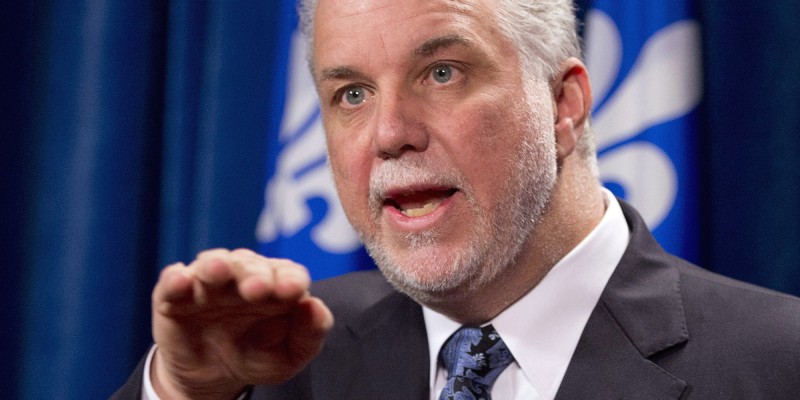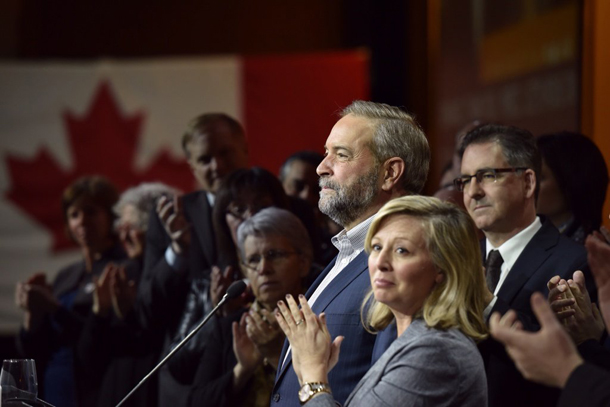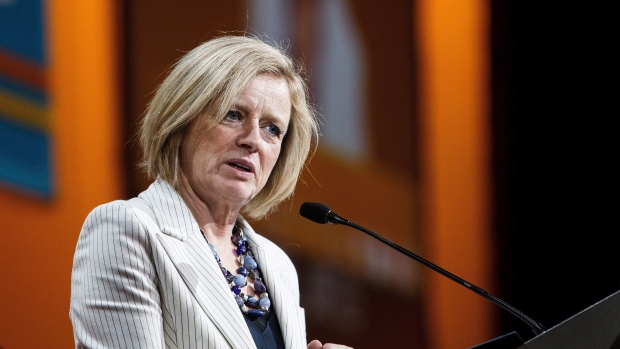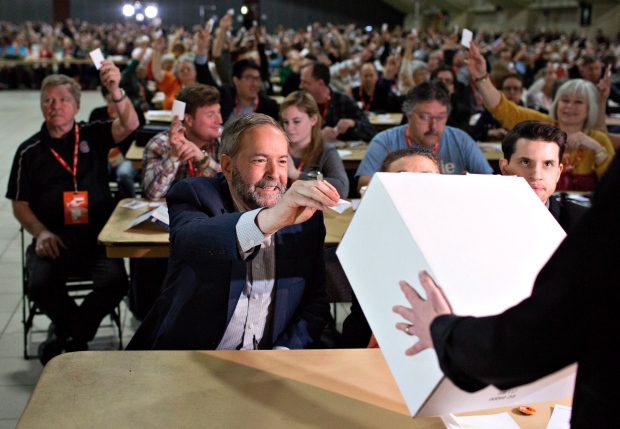 Transit. Roads. Waste-water plants. Clean energy. These are what the Trudeau government promises to fund in the largest new public infrastructure program in Canadian history. During the federal election campaign, the Liberals pledged to nearly double federal infrastructure expenditures to almost $125 billion – from the existing $65 billion – over the next decade.
Transit. Roads. Waste-water plants. Clean energy. These are what the Trudeau government promises to fund in the largest new public infrastructure program in Canadian history. During the federal election campaign, the Liberals pledged to nearly double federal infrastructure expenditures to almost $125 billion – from the existing $65 billion – over the next decade.
The coming federal building boom ranks as the biggest headline for engineering and construction firms, private investors and lenders — and the infrastructure Bar. But it’s not the only big story for them. New trade agreements that Canada has negotiated (but not yet ratified), important judicial rulings and an increased emphasis on ethical bidding practices are also developments for Canada’s infrastructure industry to heed.
The P3 asset class The City of Regina’s new sewage treatment plant, expected to be up and running by December 2016, typifies the new face of infrastructure procurement in Canada. The municipal project, which has a capital cost of $181 million, is funded in part by a $58.5-million grant from the federal government’s P3 Canada Fund. The private sector is responsible for designing, building, financing, operating and maintaining (DBFOM) the new plant over a 30-year period.
The Regina project is an example of two of the most important recent developments in infrastructure procurement: the broadening of the asset class to which the public-private partnership (P3) model is being applied, and the enlargement of public-sector participants employing the P3 model to include the federal and municipal levels.
In recent years, P3 infrastructure, once largely confined to Ontario hospitals and to roads across the country, has expanded to include waste-water treatment plants, LRT projects and even power projects such as BC Hydro’s John Hart Generating Station Replacement project on Vancouver Island and Alberta’s Fort McMurray West 500 kV Transmission Project.
Not everyone is enamoured of the P3 model. In December 2014, the Auditor General of Ontario issued a report suggesting that traditional procurement of public infrastructure would be superior to P3 procurement if projects were simply managed better by government. However, a survey sponsored by The Canadian Council for Public-Private Partnerships (CCPPP) and conducted by Nanos Research in 2015 found that municipal and Aboriginal stakeholders who had experience with P3s were generally positive toward them.
“The infrastructure deficit is particularly acute in municipalities,” says Greg Southam, a partner at Davies Ward Phillips & Vineberg LLP in Toronto. “Most of the projects that have come aboard at the municipal level have been north of $150 million. That’s the minimum size that potential bidders want to see to get involved in these types of projects.”
The P3 Canada Fund, by providing upfront money to pay off projects’ short-term debt finance, is giving smaller hubs such as Moncton and Saint John, NB and Thunder Bay, Ont. the opportunity to procure assets they could not otherwise afford.
The federal dollars are spent in the construction phase, as milestone payments and completion payments. The city then funds the operating payments over 30 years, which is much more manageable given budgetary constraints. “But when the federal government comes in,” says Southam, “it also brings a structure so that you’re not reinventing the wheel each time. The investors want to know that there’s going to be a standardized process, and the federal folks provide that.”
The federal Minister of Infrastructure and Communities, Amarjeet Sohi, has been mandated by Prime Minister Trudeau to remove the mandatory P3 “screen” applied (since 2013) to infrastructure projects of $100 million or more for which a province or municipality seeks federal funding.
The purpose of removing the screen is to cut down on the lengthy approval process it necessitates. “In Sohi’s view,” says Catherine Doyle, a partner at Blake, Cassels & Graydon LLP in Toronto, “the screen needlessly delayed Edmonton’s LRT transit project by more than a year and took away from the municipality the ability to make its own decision on how it was going to procure the project.”
The federal Liberals are also committed to creating a Canada Infrastructure Bank (CIB) to assist municipalities with funding and financing, working with the financial community to provide low-cost financing, including loan guarantees. Sohi has said the CIB will be offering capital investments to municipalities as well.
For infrastructure lawyers, the new paradigm has required them to bring in sector-specific expertise, says Tobor Emakpor, a partner at Osler, Hoskin & Harcourt LLP in Toronto. “On an LRT project, you want to bring in your rail specialists and on a power procurement, your power specialists. But the basic contractual documentation typically follows the P3 template. Although the language may be different, the general principles are the same.”
New trade agreements
In the last few years, and especially in recent months, trade treaties have become increasingly important to infrastructure procurement in Canada. It recently negotiated the Comprehensive Economic and Trade Agreement (CETA) with the European Union and the Trans-Pacific Partnership (TPP) with the Pacific Rim. It already adhered to the North American Free Trade Agreement (NAFTA) and the World Trade Organization (WTO) Agreement on Government Procurement.
“The trade agreements all mimic one another in how they regulate procurement,” says Judy Wilson, a partner at Blake, Cassels & Graydon LLP in Toronto. “If you’re an organization that has good competitive procurement processes, which most Canadian public-sector organizations do, it’s not going to affect fundamentally how you do your business.”
Says Wilson: “It’s going to affect you from a trade perspective, e.g., can you give extra points for local content? And if you can, how does it work and what sectors are excluded? But it’s not going to affect the fundamentals of your procurement — a fair, open, transparent process. Frankly, if you’re compliant with the Agreement on Internal Trade (AIT) in how you do your procurement, the odds are you’re going to be compliant across the board.”
Less prominent is the New West Partnership Trade Agreement (NWPTA) formed in 2010 among British Columbia, Alberta and Saskatchewan as Canada’s largest inter-provincial free trade zone. As of the summer of 2015, the NWPTA adopted a new bid protest mechanism on public procurement.
Under the previous mechanism, an aggrieved bidder had to persuade its own government to pursue a remedy against the sponsoring government. The new process allows a bidder to make a complaint directly against the sponsoring government. “It’s no longer up to the bidder’s government how far and how quickly the complaint is pursued,” says Karen Martin, a partner at Dentons Canada LLP in Vancouver.
“We have definitely seen a significant increase in the last few years of global players participating in the large infrastructure procurements in Canada,” says Martin. “It’s an interesting question as to whether that’s happening because of the trade agreements [or vice versa]. I suspect they’re very much related. If you’re a procurement lawyer who acts on the bidding side, it definitely means more clients for you.”
Infrastructure lawyers, however, will have to work more closely with trade lawyers, says Wilson. “There’s a much more integrated, team approach that has to happen now because trade rules, as they set procurement rules, begin to influence how you draft procurement documents.”
Recent case law
Foreign proponents face a uniquely Canadian system — a common-law regime different from other jurisdictions. In most procurements, the owner has implied contractual obligations to the bidders.
The Supreme Court of Canada has ruled that when an owner issues a tender document or an RFP, even before the bids are opened, the owner has a “Contract A” with each bidder, promising to conduct the process, and make its selection, based on the tender or RFP. The owner has an implied duty to be fair to all bidders. (In the law of tender, the contract between the owner and each bidder relating to the terms of the tender is known as “Contract A” and the contract for the actual construction is known as “Contract B.”)
Since the SCC’s 1981 ruling in R. (Ont.) v. Ron Engineering and Construction (Eastern) Ltd., what that duty of fairness actually means has been litigated in thousands of cases. A losing bidder will look carefully at how the owner conducted itself to see if there was a breach of Contract A.
More recently, the SCC issued a ruling that applied to commercial contracts generally but with relevance to procurement. Its 2014 decision in Bhasin v. Hrynew held that every commercial contract carries an implied duty on the parties to act in good faith toward each other. There is an implied duty not to lie or mislead.
“The ruling has caused ripples in many areas of commerce, including in the infrastructure and construction space,” says Martin. “Often when we have a dispute in an infrastructure project, there’s an allegation of a breach of this duty of implied good faith.”
Wilson, though, says the case is unlikely to hurt infrastructure disproportionately. “I think when you work with a lot of public-sector entities, it is part of what they assume must govern their dealings. We have always carried a duty of good faith provision in infrastructure contracts, but [lately] there has been some tweaking of the documents. Does the language you’ve used with respect to the duty of good faith properly bring in the duty as you’ve drafted it?”
Another recent SCC decision focuses narrowly on the construction sector. In September 2015, in Stuart Olson Dominion Construction Ltd. v. Structal Heavy Steel, the high court held that a lien bond has no effect on the existence and application of trust remedies under provincial construction lien legislation. “The ruling will affect private projects more than public ones as the lien legislation across the country does not apply to all public projects,” says Jane Sidnell, a partner at Rose LLP in Calgary.
When an owner or contractor has liened on a construction project, the lien can be discharged by posting either cash or a bond. In the Stuart Olson case, a bond was posted. The issue was whether the contractor who posted the bond still had a trust obligation to the lien claimant. The SCC said the obligation existed, separate and apart from the lien bond.
A lien bond, the court ruled, does not extinguish an owner or contractor’s trust obligations under the statutory trust and does not amount to a “double payment.”
“I think we all knew this, but this case brought it into greater clarity,” says Sidnell. The case will likely affect how lien bonds are used and trust monies are handled by owners, contractors and sub-contractors (and advice given by construction lawyers).
Recent British case law, meanwhile, has boosted recognition in Canada that boilerplate exclusion clauses will not reduce exposure for consequential (i.e., indirect) damages in construction projects. “Do we have any recent decisions [in Canada] that are astounding? No,” says Sidnell. “But is this something on the verge of happening in a very significant way? Absolutely.”
Infrastructure lawyers have to be careful to cover off the risks of consequential damages, she says, “because relying on those old boilerplate clauses is not going to do the trick.” Parties often cite a contract’s blanket exclusion of consequential damages, not understanding that in fact that doesn’t exclude such eventualities as loss of profit, delay damages, increased production costs, overhead and the cost to remove defective equipment from a site.
“You wouldn’t want to enter into a contract that could take down your company,” Sidnell adds. “You may not want to do $50 worth of welding if you’re going to be sued for $500 million in the event you accidentally blow up the plant.”
In Québec, the Superior Court has upheld the Québec Ministry of Transport’s policy of disqualifying firms that contribute to the design or construction of a project from bidding on the contract to supervise the same project. In Roche ltée, groupe-conseil c. Procureur Général du Québec, the court ruled that Roche Consulting Group, having done the plans and designs for a highway, was legitimately excluded from bidding on the supervisory contract.
“Now, when a project comes out,” says Yvan Houle, a partner at the Montréal office of Borden Ladner Gervais LLP, “the engineering firms have to decide what they’re interested in doing, knowing that if they win the design phase, they won’t be eligible to do the supervision.”
Up until 2011, the Ministry’s tenders for road works would include bids for both design and supervision. “In hindsight, people saw that as a conflict of interest,” says Houle. “The same engineering firm that prepared the specifications could be supervising the work carrying them out. If there were deficiencies in the specs, the engineers would point the finger at the contractor, saying it was an execution rather than a design problem.”
In Ontario, the construction industry is awaiting possible changes to the Construction Lien Act, which has been under review by an expert panel for the past year. Its recommendations, which were to be presented at the end of March, could well resonate in other provinces, says Glenn Ackerley, a partner atWeirFoulds LLP in Toronto.
He says the expert panel recognizes that there’s a strong desire from the trade contractors for prompt payment legislation. “But at the same time they’re balancing the interests of others in the industry with that. The issue of timely payment will be addressed in some form. Does that mean statutory payment periods? Yes, perhaps, but with exceptions for certain types of projects. For example, statutory prescription may not apply to home renovations.”
Currently, the Construction Lien Act requires a 10 per cent hold-back of payments all along the contracts chain. The experts may urge that the release of hold-backs become mandatory on the expiry of lien rights. While sub-contractors would be pleased, says Ackerley, “on the owner’s side it would mean more attention would have to be paid to alternative arrangements. What money retention regime would they have to use as an alternative for enforcing warranty work and correcting problems if they don’t have the hold-back available to do that? So in some ways, it would solve one problem but create another.”
Ethical bidding practices
Proponents now have to contend with an increased emphasis on ethical practices in public procurement in Canada. “In the past, governments were much more concerned with price and getting things built,” says Doyle at Blakes. “Governments across Canada now want to know that private-sector bidders have sufficient integrity. And that the tendering processes incorporate best practices in respect of ethical bidding.”
In November 2015, Québec’s Charbonneau Commission issued its final report, making 60 recommendations to combat corruption and collusion in the province’s construction industry. Even before the inquiry’s work was completed, the Québec government in 2013 adopted the Integrity in Public Contracts Act, which requires that any company wishing to obtain a public contract be specifically approved by the Autorité des marchés financiers (AMF).
The approval process involves considerable corporate disclosure, including whether officers and directors have been found guilty of any offences. The AMF can refuse to authorize a company to bid on a public contract if it concludes that the company has failed to meet “the high standards of integrity that the public is entitled to expect.”
The province was responding in part to revelations that SNC-Lavalin Group Inc. officials allegedly paid bribes of $22.5 million to two of the McGill University Health Centre’s former executives to ensure that SNC won the $1.4-billion contract. In total, eight people were charged in what police called the biggest construction fraud in Canadian history.
Québec, however, was not unique in facing ethical issues in infrastructure procurement. In Toronto, St. Michael’s Hospital was mired in a conflict-of-interest scandal in September 2015 when it was revealed that one of the hospital executives evaluating potential bidders for a $300-million construction project was involved at the same time in a private real estate venture with the builder that eventually won the contract. That raised concerns about the integrity of the procurement process.
“Québec was the first to act,” says Doyle, “and they are a forerunner of what you’re going to see in the rest of the country.” Other provinces have included in their RFPs, on a project-by-project basis, requirements for companies to have sufficient policies and procedures to ensure ethical bidding.
Governments are not simply accepting bidders’ policies at face value, says Doyle. They are asking bidders to certify that they’re compliant with these policies. “In certain circumstances, third-party advisors may be asked to audit those policies. It’s still early days, but the public sector is going a bit further than just talking the talk. It’s a live issue as to how to actually validate what private-sector participants are saying they do.”
At the federal level, the former Harper government last July instituted its Integrity Regime for procurement and real estate transactions. Under the much-criticized integrity “Framework” previously in effect, a supplier faced automatic “debarment” for 10 years if convicted of any of several Canadian or similar foreign offences.
Debarment could cost a vendor millions of dollars’ worth of existing or future federal contracts, regardless of mitigating circumstances and with no opportunity to atone for its sins. With the new Federal Integrity Regime, flexibility has been introduced to ease some of the Framework’s harsher terms.
The retroactive application of the Framework has been dropped. The new regime applies only to future contracts, not existing ones. The debarment period can be reduced by up to five years if a supplier shows that it has cooperated with law-enforcement authorities or addressed the causes of misconduct. To determine whether a supplier should be deemed ineligible due to a foreign conviction, Ottawa will now assess how similar the foreign conviction is to a listed offence within Canada.
SNC-Lavalin confirmed in December 2015 that it has signed an administrative agreement with Public Services and Procurement under the new Integrity Regime, which allows companies with charges pending to continue with existing contracts and bid on future work with the federal government. As part of the deal, the company must adhere to strict conditions and third-party oversight of its business practices. The agreement was the first reached under the new regime.
Pension Funds
Most funds are reluctant to directly finance Canadian infrastructure projects, except in Québec
Canadian pension funds such as OMERS and the Ontario Teachers’ Pension Plan have not shown much interest in directly financing Canadian infrastructure projects. That reluctance seems likely to be even greater toward municipal infrastructure. Greg Southam, a partner at Davies Ward Phillips & Vineberg LLP in Toronto, says “$15-million [worth of equity] isn’t a big enough cheque for the pension funds to write. They’d rather write a $500-million cheque for an infrastructure fund.”
One notable exception is the Caisse de dépôt et placement du Québec, which is not only investing in Canadian infrastructure but, with the passage of Bill 38 in June 2015, has been able to act as ProjectCo through a wholly owned subsidiary called CDPQ Infra. Its first two projects are in Montréal: the LRT system on the new Champlain Bridge to the South Shore and the LRT linking the West Island, Trudeau Airport and downtown Montréal.
“The Caisse is saying they have substantial experience in investing in similar projects throughout the world,” says Yvan Houle, a partner at Borden Ladner Gervais LLP in Montréal. “They’re leveraging that experience and they’re quite confident they can run these projects efficiently as a designer, builder and operator rather than just as an investor. But CDPQ Infra will have to bid against other consortia for projects. I suspect other pension funds in Canada will want to see how things play out before they consider jumping into that arena.”


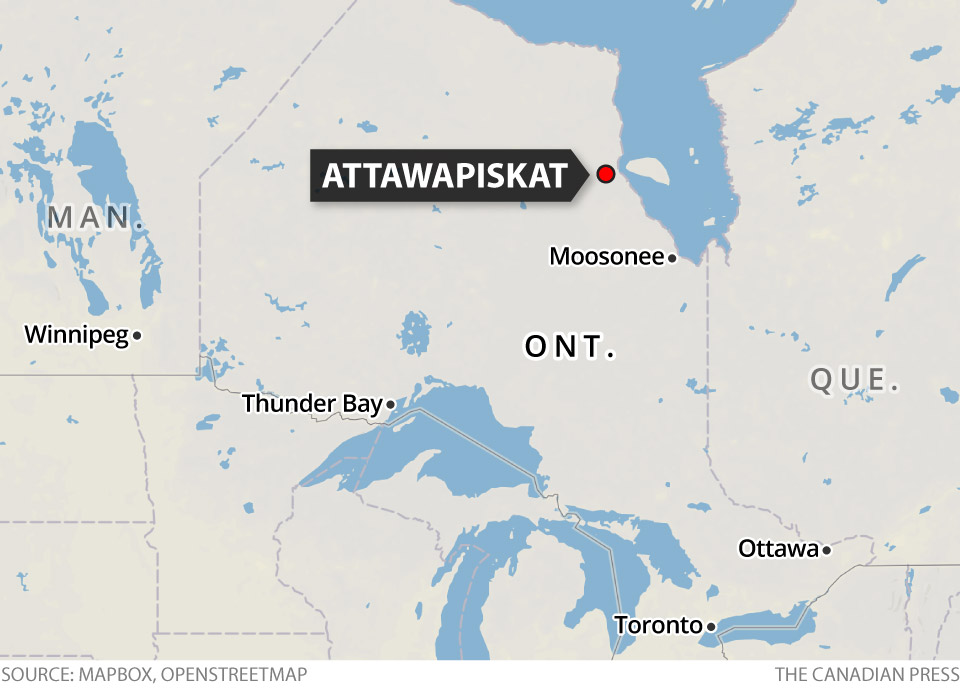 Shisheesh told CBC News: “As a chief, and as leaders here in our community, we don’t want to lose any youth. We don’t want to lose any members here in our community.
Shisheesh told CBC News: “As a chief, and as leaders here in our community, we don’t want to lose any youth. We don’t want to lose any members here in our community.
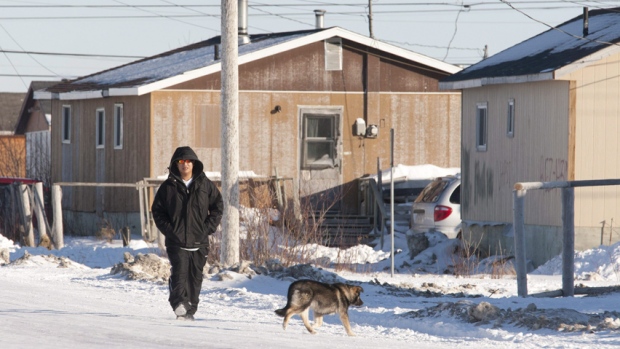
 Transit. Roads. Waste-water plants. Clean energy. These are what the Trudeau government promises to fund in the largest new public infrastructure program in Canadian history. During the federal election campaign, the Liberals pledged to nearly double federal infrastructure expenditures to almost $125 billion – from the existing $65 billion – over the next decade.
Transit. Roads. Waste-water plants. Clean energy. These are what the Trudeau government promises to fund in the largest new public infrastructure program in Canadian history. During the federal election campaign, the Liberals pledged to nearly double federal infrastructure expenditures to almost $125 billion – from the existing $65 billion – over the next decade.